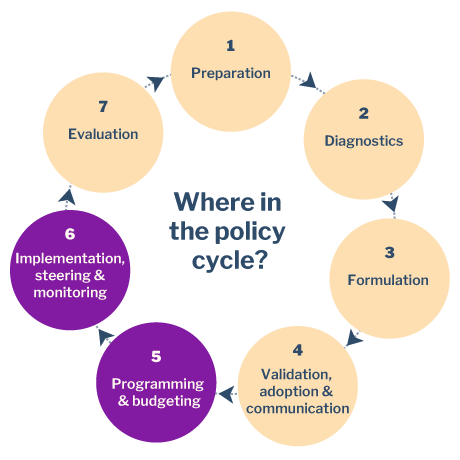Nudging technique: correct for bias
Also: Achieve diversity

Research has shown that managers have a tendency to hire people are similar to them, effectively replicating gender segregation in jobs, and often not hiring or promoting the best performing candidate. Often hiring decisions are based on individual job interviews, with unstructured questions, that don’t compare candidates’ responses for each question or task. Studies show that instead, if decisions makers systematically evaluate candidates comparatively, bias is vastly reduced and they are more likely to choose the best candidate for the job. Research also shows that when we vertically evaluate people one at a time, our inherent biases about gender roles tend to kick in, making us more likely to select women for stereotypically female jobs such as nursing, and men for stereotypically male jobs such as engineering.
With this in mind, the Harvard Kennedy School introduced a comparative evaluation model for tenure-track hires and in 2013 applied this model to all faculty hires at the Harvard Kennedy School. This means that job candidates for faculty positions are evaluated and compared to one another in a joint evaluation process. Each candidate is compared to the other on how they answered each question, and evaluators then compare their evaluations. This process provides evaluators with more counter-stereotypical information about the job candidates, enabling them to rely on the candidate’s credentials rather than their own unconscious beliefs about the ideal candidate for the job.
Where in the policy cycle can this approach be used?

Potential for change
Comparative evaluation can be used (almost everywhere) among other techniques to evaluate people for hire or promotion. A comparative evaluation policy can assist with closing the gender wage gap, escaping gender stereotypes for jobs, as well as maximizing economic returns and increasing productivity by selecting the best candidate for the position.
Sources
Medino, Thomas M. (2013) Boston closing the wage gap: Becoming the Best City in America for Working Women ![]() .
.
Bohnet, I. (2016) How to take the bias out of job interviews ![]() .
.
Bohnet, I. (2016). What Works, Gender Equality by Design. Cambridge, Massachusetts: The Belknap Press of Harvard University Press.